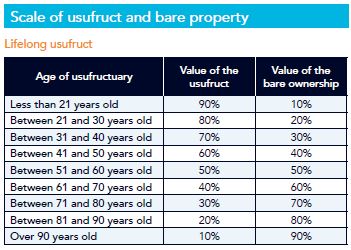August 18, 2022
To protect each other while planning to pass their wealth to their children ultimately, married couples often look at subscribing a joint-life policy with termination at second death.
This type of subscription requires that property invested is joint property. In France, the property of the assets and their qualification as joint property depends on the spouses’ matrimonial regime.
Under the regime of separation of property, each spouse is considered the owner of their own property. This means that nothing is jointly owned between them. For example, money on a joint-name bank account is considered to be joint property (“bien indivis”). Investing it into a joint-life policy with termination at second death may thus lead to a risk of requalification as an indirect gift by the French tax authorities and the taxation as such at the first death. Indeed, France does not apply inheritance tax between spouses, however gift tax applies to transfers made during the lifetime of the deceased and can amount to 45% above EUR 1,805,677.
In any case, it is essential to make sure that the couple’s matrimonial regime is appropriate, with the support of a notary for assessing the spouses’ matrimonial regime[1] and assist them to adapt it if necessary.
Dismembering the beneficiary clause may also be an alternative in order to designate several beneficiaries, and plan for a successive asset transfer while protecting the surviving spouse.
Dismembering a beneficiary clause means splitting the death benefit’s ownership in two:
- The usufruct, often transferred to the spouse is the right to use the property and receive the fruits. A person receiving it is the usufructuary or in certain cases the quasi-usufructuary.
- Usually reverting to children, the bare ownership is the right to dispose of the property
upon extinction of the usufruct. The person who receives it has the status of bare owner.

Simplified case study:
George (61 years old), a UK national, is married to Emma under the separation of property regime. They have two children, Kate and Will. The whole family resides in France.
Objectives:
- Invest EUR 700,000 in UCITS
- Plan his wealth transfer efficiently and gradually to his spouse first, and ultimately to his children
The OneLife solution:
- Wealth France, life insurance bond, with:
- George as policyholder and life assured,
- A dismembered beneficiary clause with Emma as quasi-usufructuary and his children as bare owners,
- Investment in external funds which allow to invest in UCITS.
Taxation implications
As long as George does not surrenders his policy, whether partially or entirely, the identified solution will remain tax neutral for him.
- On the decease of George
As we are dealing with premiums paid before the 70th birthday of the life assured, the regime of article 990 I of the French Tax Code (“FTC”) applies: special allowance of EUR 152,500 per beneficiary and a fixed tax rate of 20% up to EUR 700,000 and 31.25% beyond.
Then, as the allocation of death benefits is done by dismemberment of ownership, a specific scale (article 669FTC – table below) applies according to the age of the quasi-usufructuary to determine the amounts fiscally attributed to the quasi-usufructuary and to the bare owners as well as the allowance portion.
Assuming Emma is 68 years old, and the contract values EUR 1 million, the quasi-usufruct is 40% and the bare-ownership is 60% of the full ownership.
Quasi-usufruct: 1,000,000 x 40% = EUR 400,000
Bare ownership: 1,000,000 x 60% = EUR 600,000 in total (EUR 300,000 per child)
Allowance per child: 152,500 x 60% = 91,500 Euro
- Emma receives the quasi-usufruct, meaning the death benefit of EUR 1 million. She can use it as she wishes and is fully tax exempt. She decides to reinvest the money into a new policy with the children designated as beneficiary for valuable consideration
- The children will receive the bare ownership. This means that they will not receive any amount but they will have a receivable toward the estate of Emma. They will be taxed at a rate of 20% upon the bare ownership value of EUR 300,000 each reduced by the allowance of EUR 91,500
Taxation per child: 20% x (300,000 – 91,500) = EUR 41,700
On top of that, social security contributions apply at a rate of 17,2% on products that have not already been subject to taxation.
- On the decease of Emma
The children receive the receivable (i.e. the death benefit) and no taxation is due up to EUR 1 million, the amount formerly received by Emma, while on George’s death they paid tax on the bare ownership value, of only EUR 600,000.

[1] Expatriation may affect the marriage.
